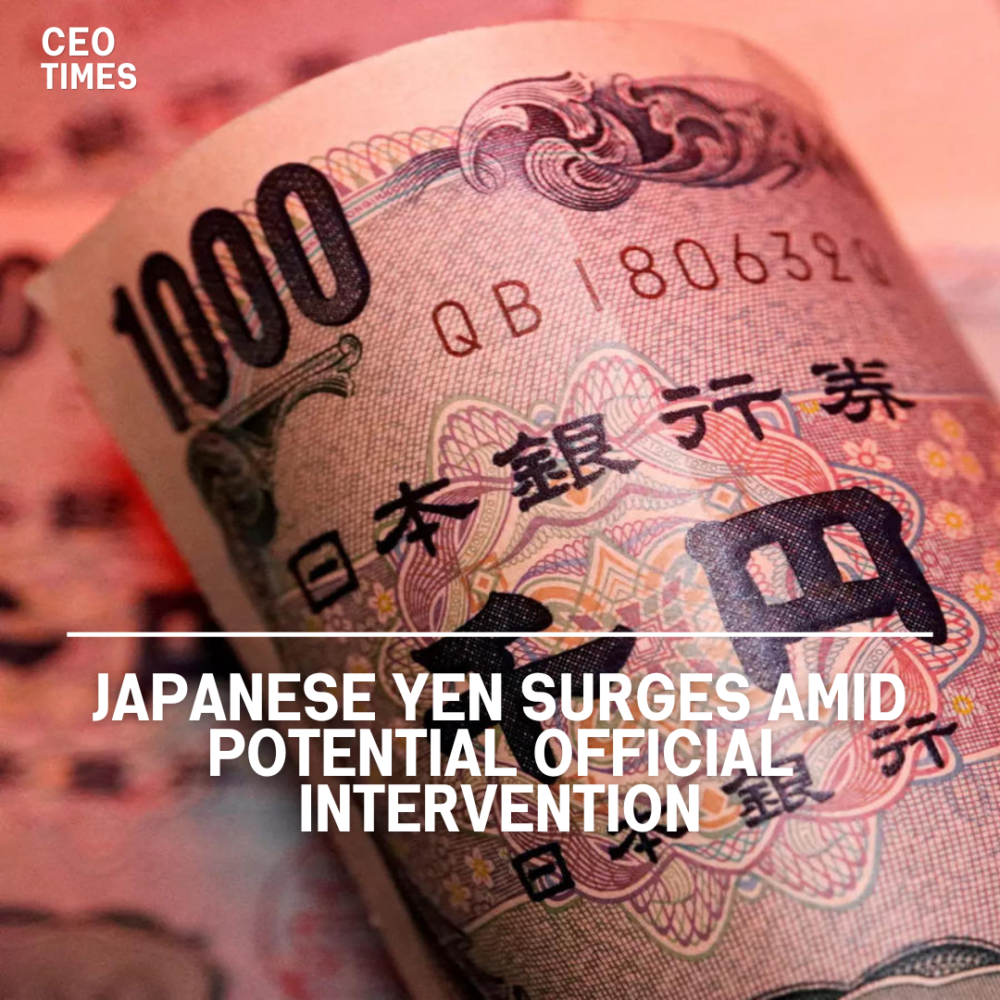The Japanese yen experienced a significant surge, climbing nearly 3% on Thursday in its largest daily rise since late 2022. This sudden movement was attributed to possible official intervention to strengthen the currency, which had languished at 38-year lows.
Key Factors and Market Reactions on Japanese Yen Surges:
- U.S. Consumer Inflation Data: The initial catalyst for the yen’s surge was the release of U.S. consumer inflation data, which showed a more significant cooling than expected in June. This data weakened the dollar, causing it to drop to as low as 157.40 yen.
- Possible Official Intervention: The rapid scale and speed of the yen’s appreciation led traders to speculate about possible intervention by Japanese authorities. Local media, including Asahi and Jiji, reported the likelihood of government action supporting the yen. Masato Kanda, Japan’s top currency diplomat, commented that recent yen movements were “not in line with fundamentals,” further fueling speculation.
- Market Analyst Perspectives: While some analysts initially believed the yen’s surge was triggered by options-related activities following the U.S. consumer price report, others noted that the magnitude of the move suggested official buying. Chris Scicluna of Daiwa Capital Markets indicated that the Ministry of Finance (MOF) likely took advantage of the post-U.S. CPI data to intervene.
- Extended Bearish Positions on Yen: Investors have been shortening the yen heavily due to Japan’s low interest rates compared to other countries. The gap between U.S. and Japanese rates created a lucrative carry trade opportunity, where traders borrow yen at low rates to invest in higher-return dollar-priced assets. The sudden yen appreciation forced many to unwind these bearish positions.
Currency Market Movements:
- Dollar-Yen Exchange Rate: The dollar last traded at 158.70 yen, down 1.8% daily, marking its lowest since mid-June.
- Euro-Yen and Sterling-Yen: The euro fell 2% to 171.60 yen, while sterling declined 1.4% to 204.72 yen. The Australian dollar also dropped to 107.50 yen.
- Speculative Positions: Data from the U.S. regulator showed speculators held significant bets against the yen, valued at $14.26 billion, not far from a six-and-a-half-year high in April. This large bearish position suggests considerable potential for further yen strengthening if investors continue to reverse their trades.
Implications and Future Outlook:
The yen’s sudden appreciation highlights the volatile nature of currency markets, especially when influenced by potential official interventions and significant economic data releases. The U.S. inflation data increased expectations for a September rate cut by the Federal Reserve, which could narrow the interest rate gap between the U.S. and Japan, further impacting the dollar-yen exchange rate.
The yen’s performance will be closely watched as traders adjust their positions and anticipate potential further interventions. The extent of official action and the ongoing economic developments in the U.S. and Japan will play critical roles in shaping future currency movements.




















